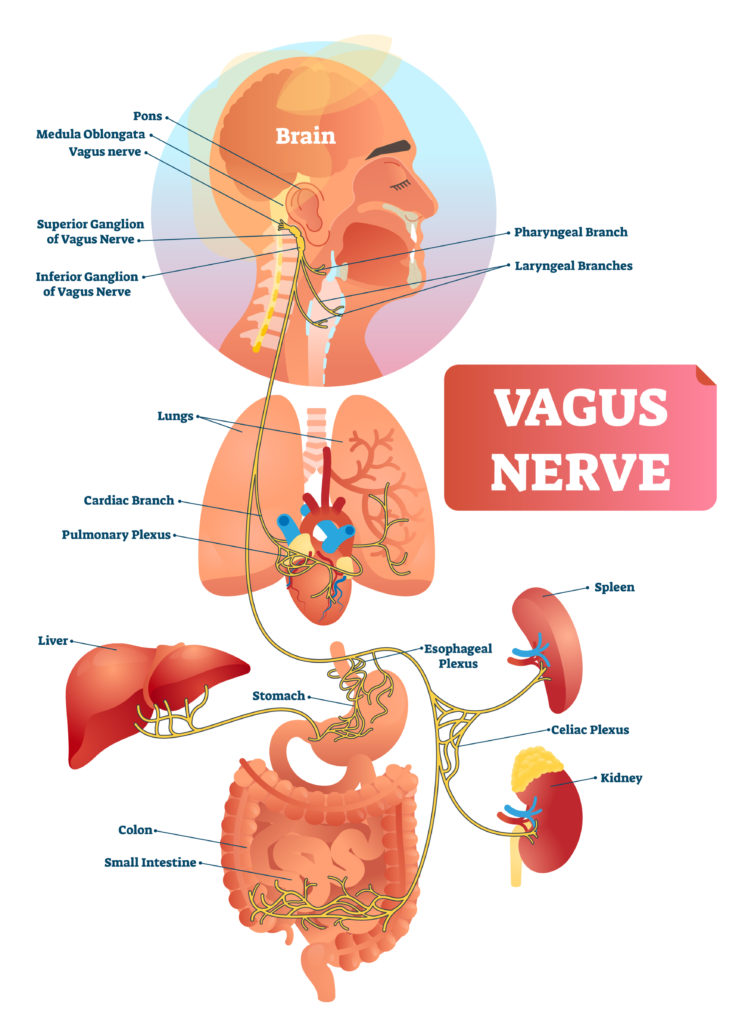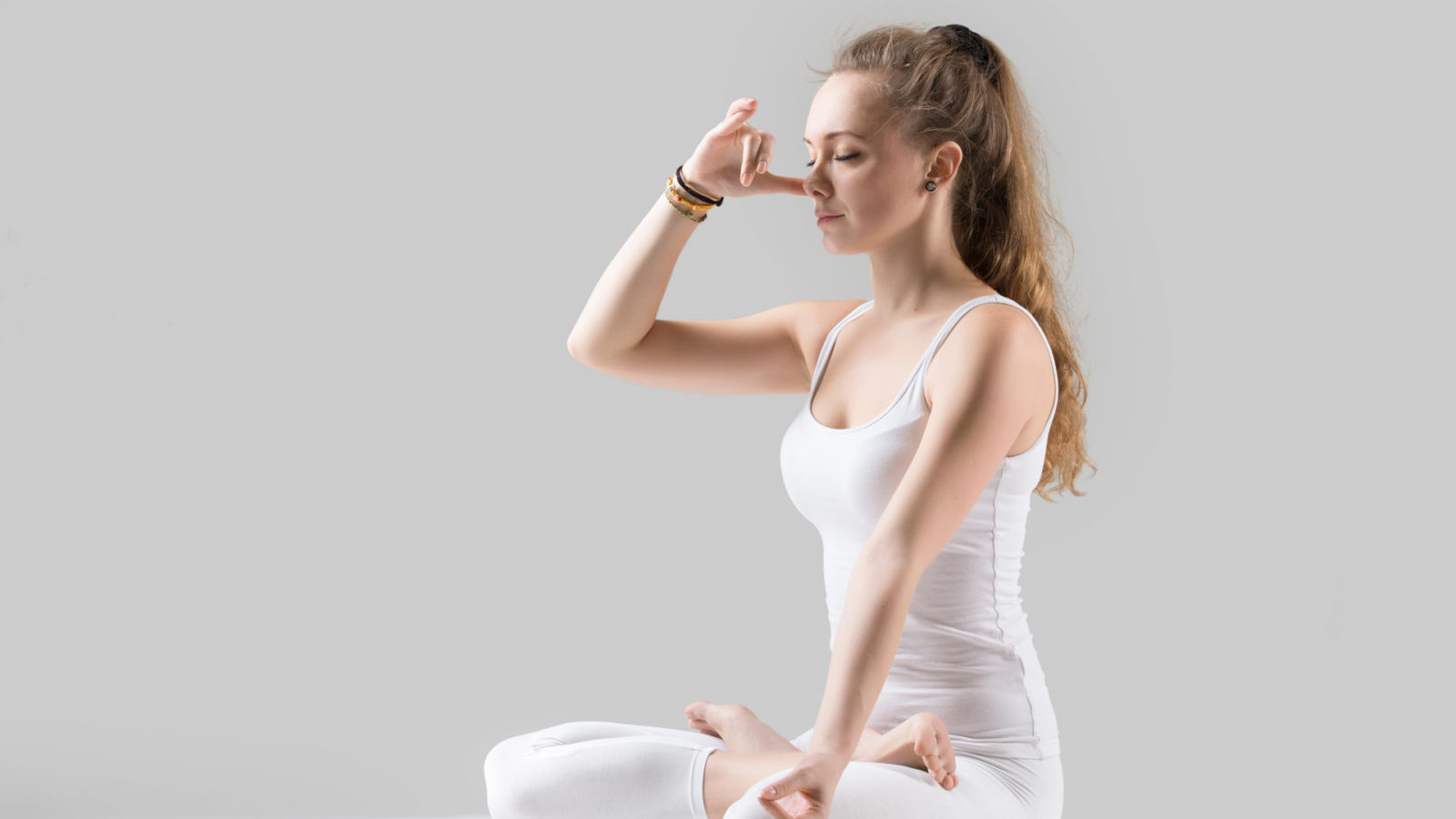Yoga is a flow based on relaxation and meditation coupled with physical postures, exercise and breathing techniques to improve physical, mental and spiritual health. It helps in improving one’s fitness as well as promoting relaxation, reducing stress, anxiety and assisting in lowering blood pressure 1.
What is Pranayama?
Pranayama is a yogic practice that focuses on breathing techniques and involves taking in more oxygen. Pranayama combined poorak, kumbhak and rachek, which mean inhalation, exhalation and interval breathing. By regularly practicing pranayama “Prana Shakti” 2 is distributed throughout the body, purifying the mind, increasing longevity and energizes the seven chakras. Prana refers to one’s life force while shakri means one’s creative energy.
Pranayama for Digestion
Yoga helps to reduce the activity of our sympathetic nervous system 3 also known as our ‘fight or flight’ mechanism. When we are under a great deal of stress and our body shifts into fight or flight and our digestive system takes a hit. We may become more bloated or distended, produce more gas or suffer from constipation. Just as yoga can turn down our sympathetic nervous system so can breathing.
Pranayama and the Gut-Brain Connection
Yogic breathing has been shown to improve an underactive parasympathetic nervous system (also known as rest and digest system) as well as stimulating the vagus nerve. The vagus nerve connects all the organs of the body with the brain, the gut-brain connection. The vagus nerve is particularly important for digestion as it stimulates the enteric nervous system 4 that then prompts the intestinal muscles to move and churn the food we ingest. The enteric nervous system is the guts brain, containing between 50-100 nerve cells. It also contains most of our immune system,5 accounting for more immune cells than are present in our blood and bone marrow.
If our vagus nerve is impaired, due to lack of stimulation from the brainstem it can lead to poor digestion, constipation, distention, and excessive gas. We can see this in individuals who have illnesses that affect the brain such as Alzheimer’s and Parkinson’s, their digestion is impaired and slowly they lose their ability to control their bladder and bowels 6. An increase in poor immune health, as well as mental health, is also apparent when the gut-brain connection is vulnerable.

Improving the Vagus Nerve
Many things can be done to improve the vagus nerve connection. Pranayama or yogic breathing is a great way to stimulate the vagus nerve and ignite digestion 7. Studies have shown that doing specific pranayama daily has reduced anxiety, depression 8 and improved focus, digestion and overall energy 9. Below are a few examples of pranayama techniques that can be used to stimulate the vagus nerve and improve digestion.
Kapalbhati Kriya
Yoga practices such as Kapalbhati Kriya are both very beneficial for GERD as they control GERD symptoms in patients with hiatus hernia 10. Kapalabhati is known as the breath of fire. It is a warming and energizing breath that aids in cleansing the body through the creation of heat and energy through movement (Kumar, R., 2016).
How to do it
In a seated position, with the back straight and extended exhale freely and completely. Inhale gently through your nose and then quickly exhale with vigour through your nose whilst you bring your navel towards the spine. Repeat again, do 10 rounds of breathing and over time gradually increase the rounds you do.
When to do it
Kapalbhati kriya is great to do in the morning on an empty stomach or before a meal.
Nauli
Nauli is a breathing technique that is thought to cleanse the organs of the abdominal region 11. It massages the organs such as the kidneys, liver, bladder pancreas and gallbladder. When breathing in one also makes circles with their stomach and torso. A swirling motion moving left to right can also be done. It encourages weak gastric fire, aids those with issues of constipation. It can aid in clearing out waste from the small and large intestine which can eliminate distension, gas and abdominal can.
How to do it
This is a more advanced breathing technique and it may take you a few months of practicing uddiyana bandha before you can attempt this pranayama. It is best to have a knowledgable yogi teach you this pranayama.
Begin with Uddiyana bandha. You may start in a standing position with your knees slightly bend on in a cross-legged seated position. Place your hands on your thighs with fingers pointing towards your abdomen. Relax your chin, breath out quickly and completely, empty your lungs. Hold your breath with sealed lips. Gently round your back, bring up the abdomen and relax the muscles of the stomach. Pretend to breathe in while keeping lips sealed. Hold for a few seconds, as long as it is comfortable. Before inhaling, relax the facial and throat muscles, calmly and with control, breathe in through the nose.
For nauli, assume the same position as before. Breath our completely and hold your breath. This time contract the muscles of the abdomen and move them to one side. Afterwards, move the abdominal muscles to the opposite side, start slowly and then speed up. The rolling of the muscles is known as nuali.
When to do it
This pranayama is best done in the morning on an empty stomach before consuming any food or liquid. This breathing technique should not be performed by pregnant women, individuals who experience hypertension, heart disease or serious gastrointestinal issues.
Bhastrika Pranayama
Bhastrika pranayama is a hath yogic breathing technique. It aids in increasing circulation 12 in the body as well as producing inner heat at a physical level. It aids in the removal of toxins, reducing inflammation as well as the buildup of phlegm (Kumar, R., 2016). It was performed by 30 patients with hypertension for 60 days. The study found that their mental health improved, they showed symptomatic improvement in their hypertension as well as having great improvements to their digestive wellness and metabolism (Ranawat, R.S., et al., 2015).
How to do it
In a seated position, with the back straight and extended take in a deep breath and then immediately breathe out. This can be done slowly at first with time building up the speed of breathing in and out. During inhalation, the abdomen moves out and during exhalation, it moves in. Do a round of 10-15 breaths. As you continue to practice you can increase the amount of breath in a round. Do 2-3 rounds of bhastrika.
When to do it
It is best to practice this pranayama in the morning on an empty stomach. This breathing technique should not be performed by pregnant women, individuals who experience hypertension, heart disease or serious gastrointestinal issues
References
- Jain, V., Sharma, J. (2017). Effect of Yogic Intervention: Pranayama on Stress. International Journal of Science and Conscientiousness. Volume 3, Issue 2, pages 10-16.
- Jain, V., Sharma, J. (2017). Effect of Yogic Intervention: Pranayama on Stress. International Journal of Science and Conscientiousness. Volume 3, Issue 2, pages 10-16.
- Tripathi, M. N., Kumari, S., & Ganpat, T. S. (2018). Psychophysiological effects of yoga on stress in college students. Journal of education and health promotion, 7, 43.
- Williams, E.K., Chang, R.B., Strochlic, D.E., Umans, B.D., Lowell, B.B., Liberles, S.D. (2016). Sensory Neurons that Detect Stretch and Nutrients in the Digestive System. Cell. Volume 166, Issue 1, Pages 209-221.
- Carabotti, M., Scirocco, A., Maselli, M. A., & Severi, C. (2015). The gut-brain axis: interactions between enteric microbiota, central and enteric nervous systems. Annals of gastroenterology, 28(2), 203–209.
- Rao, M., Gershon, M.D. (2016). The bowel and beyond: the enteric nervous system in neurological disorders. Nature Reviews Gastroenterology and Hepatology. Volume 13, Issue 517-528.
- Pal, G.K. (2018). Pranayama could be the Best Nonpharmacological and Nonsurgical Method of Vagal Nerve Stimulation. International Journal of Clinical and Experimental Physiology. Volume 5, Issue 2.
- Peterson, C.T., Bauer, S.M., Chopra, D. (2017). Effects of Shambhavi Mahamudra Kriya, a Multicomponent Breath-Based Yogic Practice (Pranayama), on Perceived Stress and General Well-being. Journal of Evidence-Based Integrative Medicine.
- Udupa, K., Sathyaprabha, T.N. (2018). Influence of Yoga on the Autonomic Nervous System. Research-Based Perspectives on the Psychophysiology of Yoga.
- Dayma, R., Bhandari, R.B. (2018). Review on Effect of Yoga and Lifestyle Moderation on Gastrointestinal Diseases. Journal of Harmonized Research in Applied Science.
- Kumar, R. (2016). Role of Yoga in Purifying Body. The International Jurnal of Indian Psychology. Volume 3125, Issue 27, Pages 2348-5396.
- Gupta, G.P. (2017). Yoga and its Influential Factor Towards Obesity. International Journal of Science and Consciousness. Volume 3, Issue 3, Pages 63-70.
Amanda Filipowicz is a certified nutritional practitioner (CNP) with a bachelor in environmental studies (BES) from York University. She also has certification in clinical detoxification, prenatal and postnatal care as well as nutrition for mental health. She has been working as a nutritionist since 2013 and is a lifelong proponent of eating healthy.

